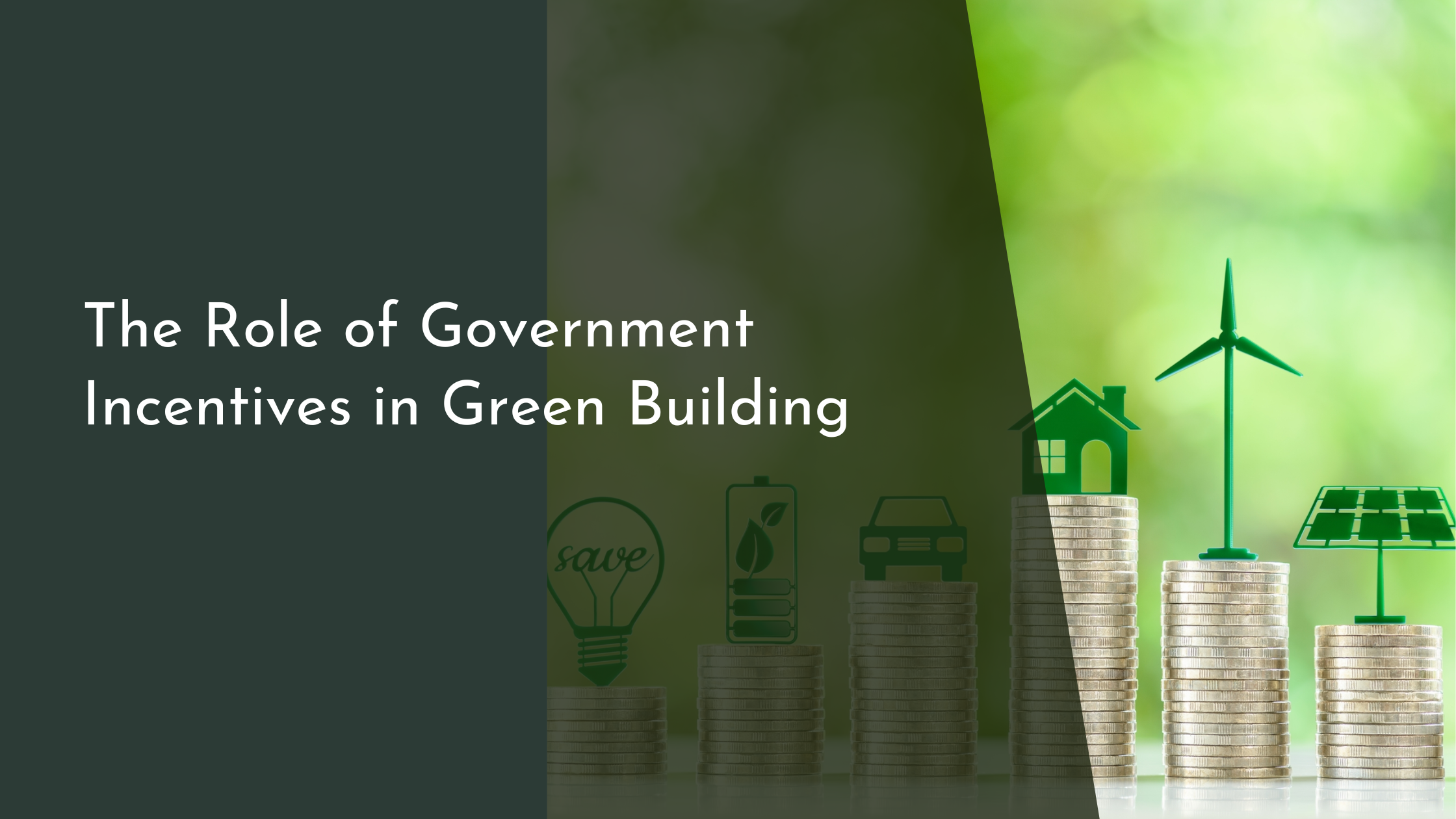The Role of Government Incentives in Green Building
In recent years, the world has increasingly turned its attention to sustainable development, seeking ways to minimize environmental impact while fostering economic growth. One of the pivotal elements in this movement is green building, which refers to the design, construction, and operation of buildings that are environmentally responsible and resource-efficient throughout their life cycle. Governments worldwide are recognizing the potential of green building to contribute to a sustainable future and are actively incentivizing its adoption. This article explores the role of government incentives in green building, delving into their types, examining successful case studies, and envisioning the future of environmentally friendly architecture with government support.
Understanding Green Building and Its Importance
Green building is more than just a trend; it’s a necessity in the face of climate change and resource depletion. It encompasses a holistic approach that considers energy efficiency, water conservation, indoor environmental quality, and the use of sustainable materials. The primary objective of green building is to reduce the negative impact of buildings on the environment and human health. By incorporating sustainable practices, such as using renewable energy sources and optimizing resource use, green buildings can significantly reduce carbon footprints and operational costs.
The importance of green building extends beyond environmental advantages. It also includes economic and social benefits. Green buildings often result in lower utility bills, reduced waste, and increased asset value. They also enhance the quality of life for occupants by improving indoor air quality and natural lighting. As a result, greener practices contribute to a healthier, more productive workforce. In the broader scope, green buildings play a crucial role in achieving sustainable urban development, helping communities become more resilient and adaptive to changing environmental conditions.
Types of Government Incentives for Green Building
Governments employ a variety of incentives to encourage the adoption of green building practices. Financial incentives are among the most common, including tax credits, grants, and low-interest loans. These financial benefits help offset the upfront costs associated with green building technologies and materials, making sustainable construction more accessible to developers and homeowners. For example, a government might offer a tax deduction for buildings that meet specific energy efficiency standards, thus reducing the overall cost of adopting green technologies.
Beyond financial incentives, governments also provide regulatory and technical support to promote green building. This can include fast-tracking permits for green projects or offering density bonuses—allowing developers to build more units than typically permitted if they incorporate sustainable features. Additionally, governments might provide educational programs and resources to raise awareness and provide guidance on implementing green building practices. By fostering a supportive regulatory environment and providing the necessary tools and knowledge, governments can significantly facilitate the transition to sustainable building practices.
Case Studies: Successful Green Building Projects
One of the most celebrated examples of successful green building is the Bullitt Center in Seattle, Washington. Often dubbed “the greenest commercial building in the world,” the Bullitt Center is a testament to what can be achieved with the right incentives and vision. This building incorporates numerous sustainable features such as solar panels, rainwater harvesting systems, and composting toilets. The state of Washington played a crucial role in its development by offering financial incentives and support through sustainable building programs, demonstrating the power of government backing in bringing ambitious green projects to life.
In Singapore, the government has made significant strides in promoting green building through initiatives like the Green Mark Scheme. This program rates buildings based on their environmental impact and encourages developers to surpass basic standards through incentives like cash grants and award recognition. A notable outcome of this initiative is the Parkroyal on Pickering, a hotel that stands as a green oasis with its extensive sky gardens and energy-efficient solutions. The success of these projects highlights how government incentives can drive innovation and sustainability in the construction industry.
The Future of Green Building with Government Support
The future of green building appears promising with continued government support. As climate change concerns intensify, governments worldwide are likely to increase their commitment to sustainable development, recognizing the profound impact of green buildings on achieving climate goals. This could lead to more comprehensive and integrated policies that not only incentivize green construction but also mandate sustainable building practices across the board. By setting ambitious targets and providing robust support, governments can catalyze the mainstreaming of green building as a standard practice.
Moreover, technological advancements in green building materials and practices are expected to proliferate, driven by both industry innovation and government backing. With concerted efforts and collaboration between public and private sectors, the future landscape of construction could see a widespread adoption of net-zero energy buildings and even positive energy buildings that contribute more to the grid than they consume. As governments continue to champion and nurture green building initiatives, they pave the way for a more sustainable, healthier, and economically vibrant future.
In conclusion, government incentives play a crucial role in advancing the green building movement. By providing financial assistance, regulatory support, and educational resources, governments can lower the barriers to sustainable construction, encouraging widespread adoption and innovation. The success stories of projects like the Bullitt Center and Parkroyal on Pickering demonstrate the potential of government-backed green initiatives. Looking forward, continued government support combined with technological advancements holds the promise of a greener, more sustainable built environment. As we strive towards a future where sustainability is the norm, government incentives will undoubtedly remain a key driver in transforming our cities for the better.


